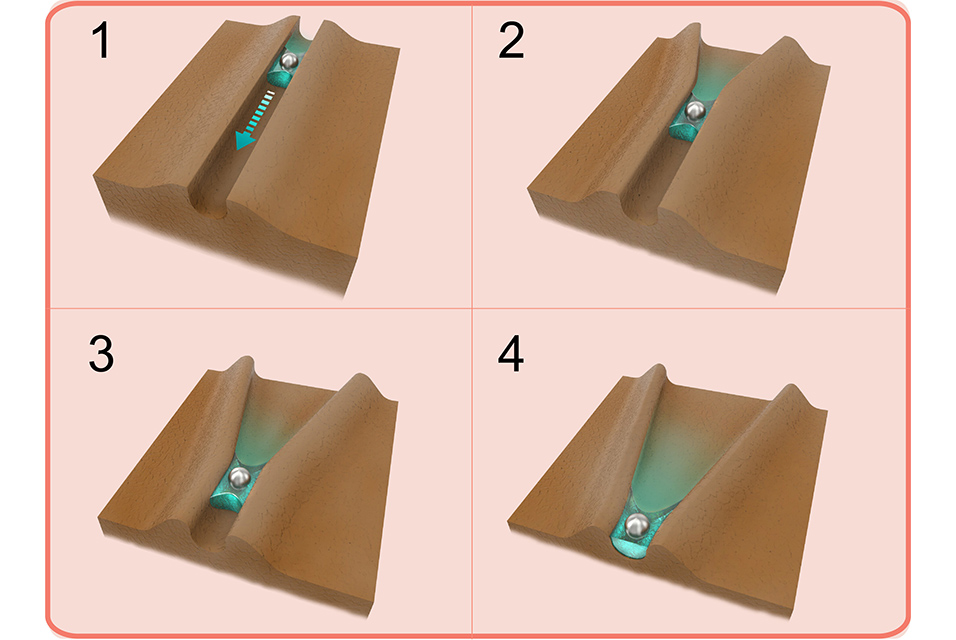ABU DHABI.- Researchers of the Smart Materials Lab (SML) and the Center for Smart Engineering Materials (CSEM) at
NYU Abu Dhabi have reported a novel method of harvesting water from naturally occurring sources such as fog and dew.
In the study, Research Scientist Patrick Commins and Post-doctoral Associate Marieh B. Al-Handawi observed for the first time the process of water spontaneously condensing from its vapor to liquid form and moving across the surface of a slowly subliming organic crystal. This was found to be caused by changes in the width of small channels that appear on the surface of the crystal over time, which guide the condensed water across the crystal's surface.
In the paper titled "Autonomous and Directional Flow of Water and Transport of Particles across a Subliming Dynamic Crystal Surface," published in the journal Nature Chemistry, researchers describe the process of condensation and movement of water that carries particles on the surface of crystals of hexachlorobenzene, a compound that is often used as a fungicide.
Due to sublimation, the surface of this material has a rigid topography with defined parallel channels. Small solid particles such as dust or even metallic nanoparticles were observed to move autonomously along the channels. The motion of these particles was found to be caused by the condensed aerial water, which migrates through the channels due to the change in the cross-section and width of the channels over time.
Autonomous water flow has previously been achieved utilizing either surface chemical modifications or precisely fabricated microchannels, or on the surface of natural systems such as some plants or insects. The findings from this new study hold the potential to guide the creation of new technologies to utilize naturally occurring sources of water such as dew and fog, which are currently only used by some desert plants and animals for survival.
The new research builds on the understanding of water collection mechanisms of such biological structures, while it presents a fundamentally different mechanism for water transportation.
"The motion of water on solid surfaces is one of the most fundamental phenomena found in nature," said Panče Naumov, a leader of the Smart Materials Lab and Director of the Center for Smart Engineering Materials, and the corresponding author of the study.
"Through millennia-long evolutionary processes, surfaces of natural organisms have been optimized for efficient transport of water for a variety of life-supporting functions. Plants have been seen to do this by moving water against gravity. Our team has discovered a new way to move water across a dynamic solid surface, a fundamentally new underlying principle of water collection. This can provide an inspiration for emerging technologies that could potentially maximize the efficiency of experimental systems used for the collection of aerial humidity."









